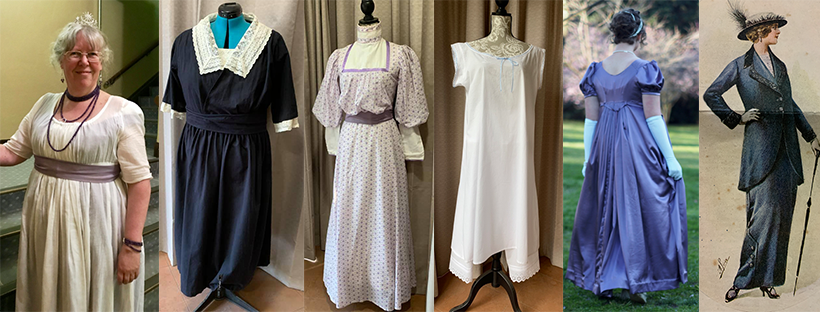A project from 2016
I didn’t exactly start out to hand-sew an entire dress. However, at the time I was doing a fair amount of travelling so I took the bodice pieces with me and stitched on them here and there. When I’ve been home, I’ve been concentrating on writing, and I like to have something simple to do with my hands while I’m staring at the screen trying to think of words. So I hand-stitched the sleeves, and set them into the bodice, and after dithering about how to finish the armhole seams, I decided to trim them and overcast them, because that was simple to do and historically accurate. The skirt seams were straight and simple. I was going to sew the bodice to the skirt by machine, because all the layers of pleats at centre back are very thick . . . but the sewing machine table had stuff piled on it so I did that seam by hand, too. Although that was something of a challenge:

Once I’d done that, the dress was so close to being entirely sewn by hand that I added the waistband casing and other finishing touches by hand, too. And so it became my first entirely hand-stitched historical dress:



’m wearing it, as a middle-aged woman would have – with a cap and a fichu (also both hand-stitched). However, my kind photographer is not a stylist and didn’t tell me the fichu was bunched up wrong at the back.
A detail of the block print pattern, which is in keeping with the style of printed cottons of the time:

Material: Block print cotton voile, purchased from Trade Star Exports on Ebay
Pattern: Adapted from the Sense and Sensibility drawstring dress, adding additional fullness to the front bodice and skirt, an additional width of fabric to the back skirt, and increasing the size of the sleeves at the top by about 1″.
Year: c. 1795
Notions: Aurifil white cotton thread
